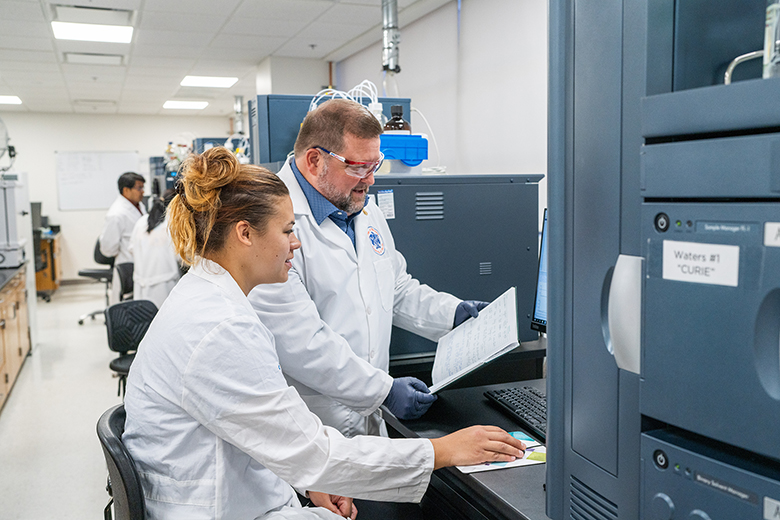A $19 million grant may help University of Florida Health researchers uncover a treatment for stimulant use disorder.
By Emily Jacobs
As many as 4.5 million Americans over age 12 may have a stimulant use disorder, according to the 2021 annual National Survey on Drug Use and Health. This includes misuse of stimulants like cocaine, ecstasy and methamphetamine, as well as legal prescription stimulants. While opioid misuse and overdose deaths have received the most attention and funding, stimulants are a growing driver of U.S. drug overdose deaths, creating greater urgency to find effective treatments. There are currently no FDA-approved medications available to treat stimulant use disorder. However, that may change thanks to new research out of the University of Florida College of Pharmacy and Sparian Biosciences.
The National Institutes of Health and the National Institute on Drug Abuse have awarded a five-year, $19 million grant to Sparian Biosciences and the University of Florida College of Pharmacy researchers. This funding will help further the development of the molecule SBS-518, which may become a novel, oral treatment for stimulant use disorder.
Dr. Christopher R. McCurdy, professor of medicinal chemistry and the Frank A. Duckworth Eminent Scholar Chair in the UF College of Pharmacy, leads the team that developed this compound. He also directs the university’s Translational Drug Development Core within the Clinical and Translational Science Institute. This core will conduct the work necessary to get the molecule out of the lab and into clinical tests.
The researchers’ aim with SBS-518 is to block or decrease the desire to use substances like cocaine or methamphetamine.

McCurdy’s team, along with researchers at the National Institute on Drug Abuse, used the compound on rats that had been trained to self-administer cocaine or methamphetamine. After receiving SBS-518, the animals showed less interest in self-administering the stimulants, although they had access to the drugs. At the same time, the rats maintained a normal food intake on demand. This may indicate that the compound blocks their drug-seeking ability without blocking normal survival behaviors.

Promising Research
In seeking a treatment for stimulant misuse, previous research had attempted to imitate the structure of cocaine in a way that would block cocaine’s actions. This included targeting the dopamine transporter protein that cocaine interacts with in the body. However, these previous compounds also blocked that dopamine transporter from doing its job, just as cocaine does. This left more dopamine available to create a euphoric response, without reducing cocaine intake.


 “It is very easy for us, as researchers or as educators in the basic sciences, to get lost in the science and forget that what we’re doing has a bigger purpose overall…to improve human health and improve outcomes and ultimately to make people better.”
“It is very easy for us, as researchers or as educators in the basic sciences, to get lost in the science and forget that what we’re doing has a bigger purpose overall…to improve human health and improve outcomes and ultimately to make people better.”